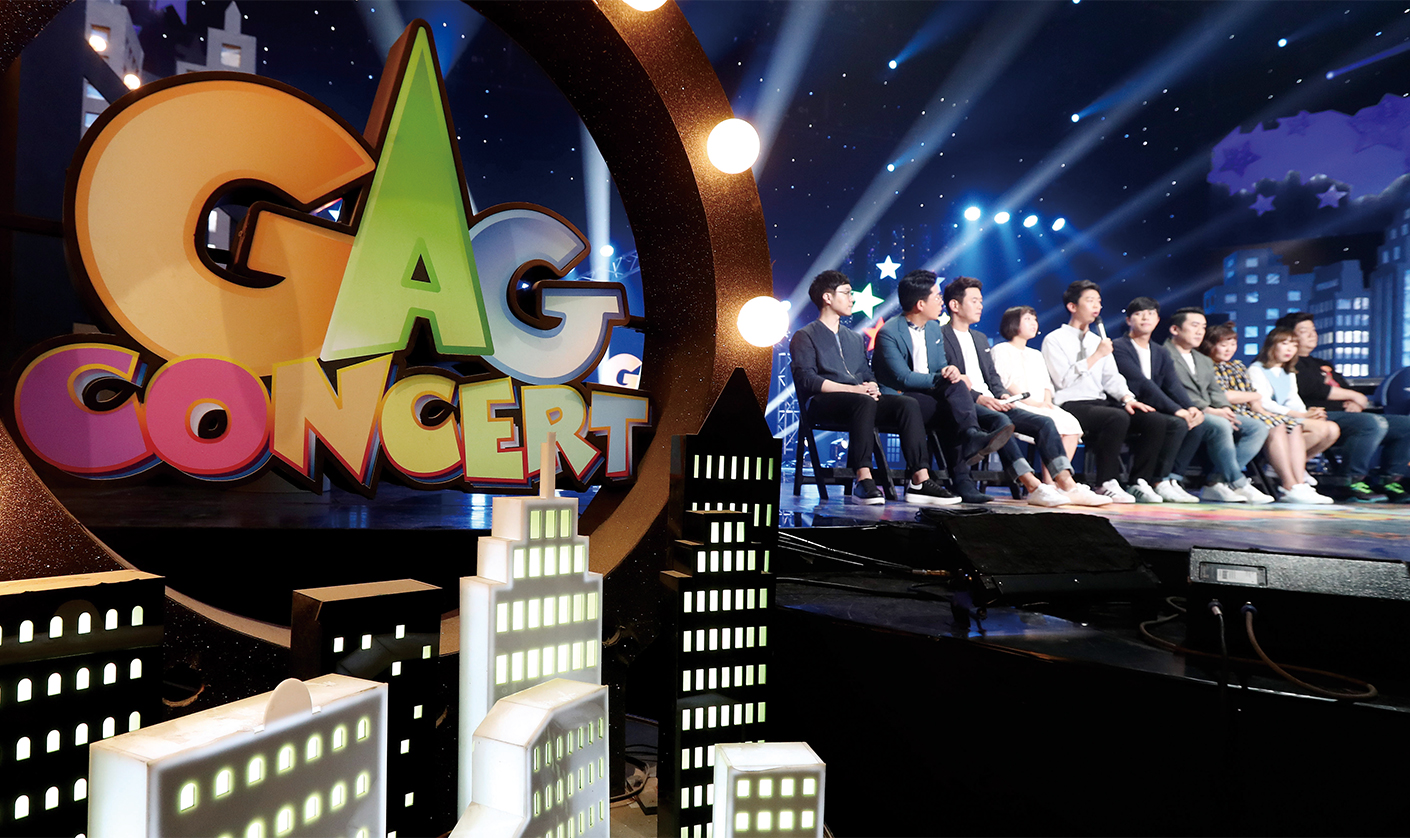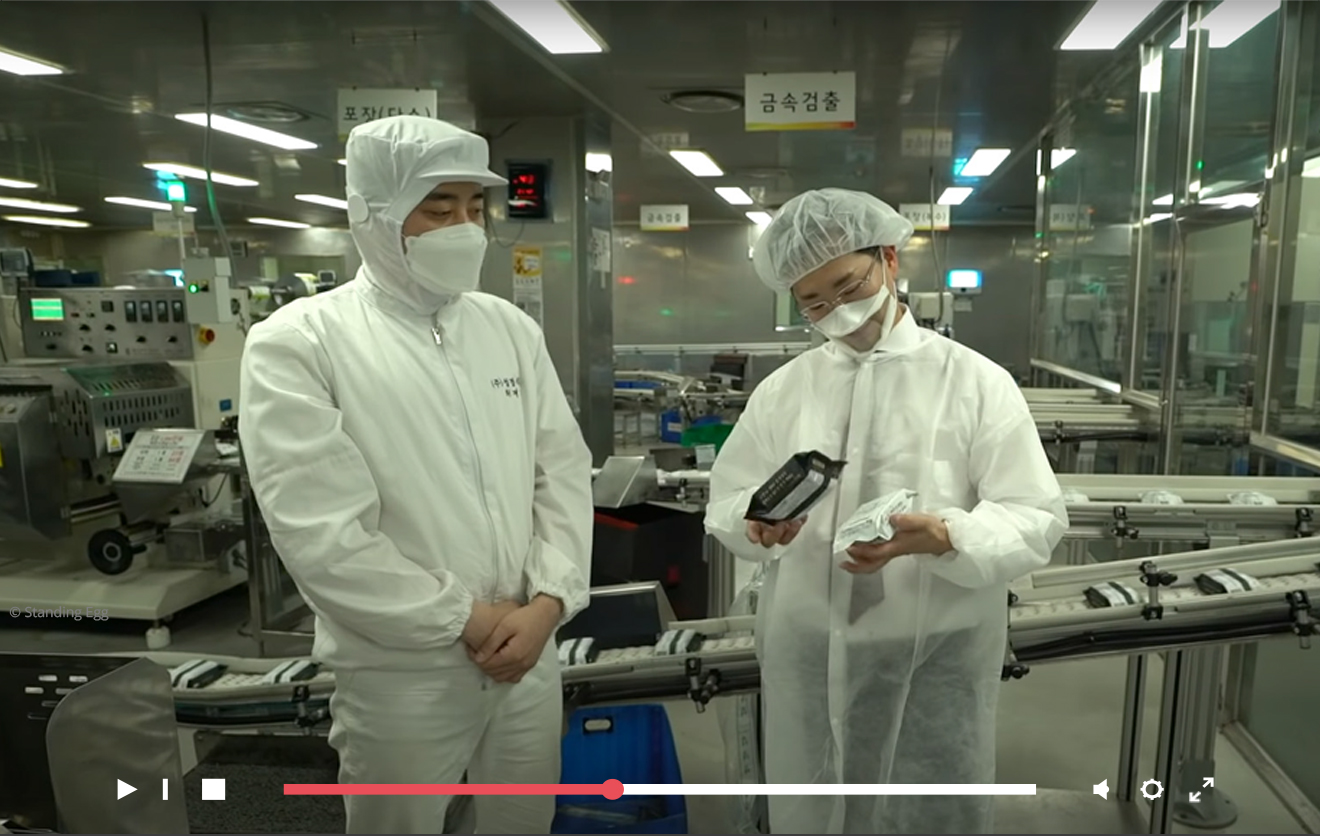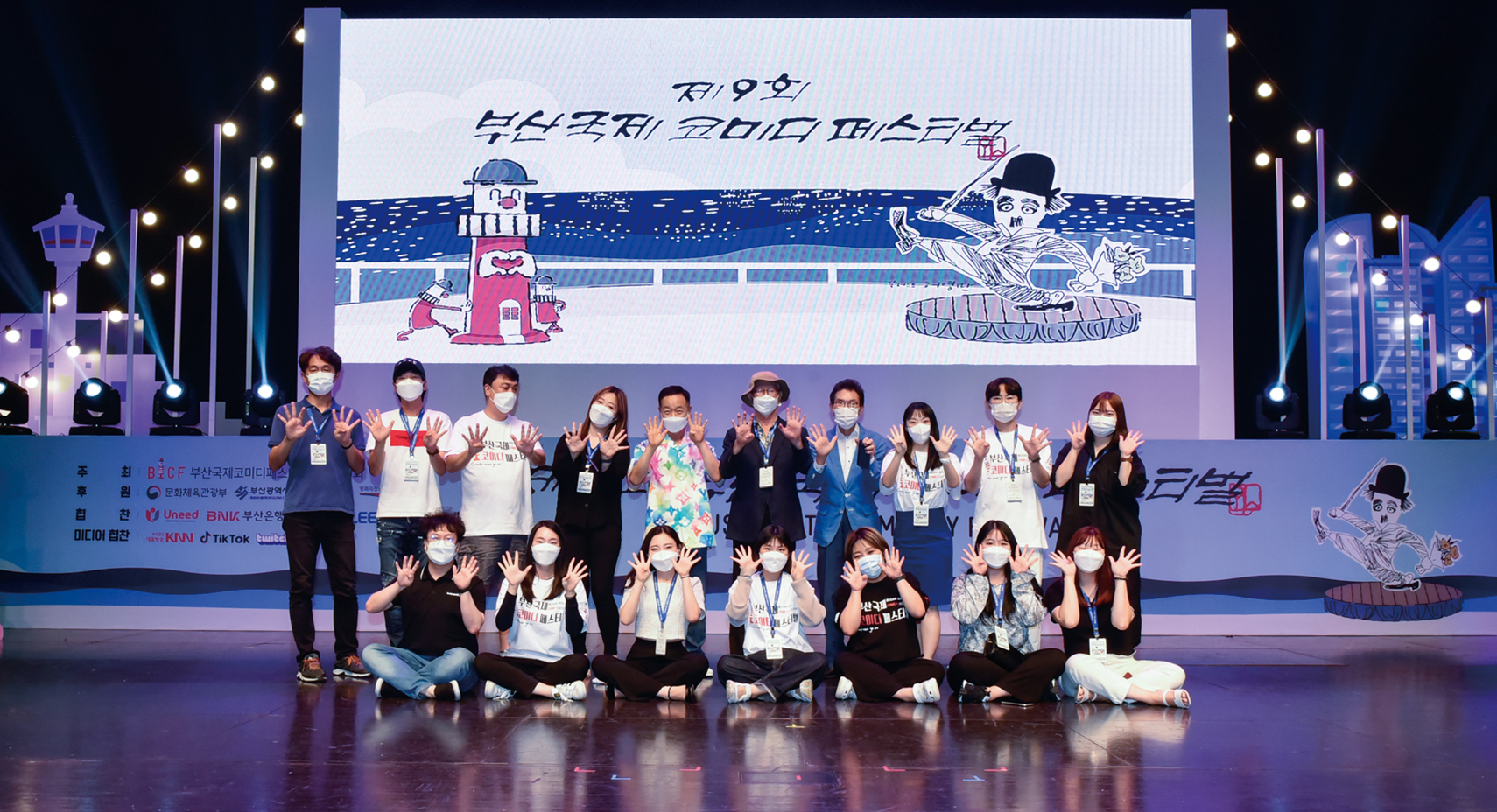November 2021

November 2021
The conclusion of the comedy program “Gag Concert,” a show virtually synonymous with TV comedy in Korea, symbolically signaled the end of broadcast TV comedy. Many comedians lost their jobs as a result, but they have found new stages on which to work.
Written by
Jung Duk Hyun,
culture columnist

In June 2020, KBS’s “Gag Concert,” a leading comedy program on Korean TV, finally concluded after a 20-year run.
“Gag Concert”―along with two other popular programs, MBC’s “Gag Night” and SBS’s “People Looking for a Laugh”―had led a “golden age” of broadcast TV comedy that began in the late 1990s. “Gag Night” and “People Looking for a Laugh” concluded in 2009 and 2017, respectively. And with the end of “Gag Concert,” the last bastion of broadcast TV comedy fell, bringing the golden age to the end.
Behind this end of an era were two factors: the diversification of the media and transformations in comedic sensitivities. This is to say, we now consume media through many more channels, including our phones, and audiences want edgier material that satirizes current events. Due to their stricter ethical and political standards, however, broadcast TV shies away from such material, opening the way for challengers.
Some comedians got an early start looking for new challenges. The comedy team Ongals, which won an award at the Edinburgh Fringe Festival in 2017, had previously appeared in “Gag Concert.” However, they spread their artistic wings to make a successful entry into comedy festivals.
The online video platform YouTube has provided a stage for many comedians in search of a home.
Even before the end of TV’s comedy golden age, some comedians recognized YouTube’s potential as a space relatively free from restrictions. Comedians Son Min-su and Imlala turned towards YouTube in 2017, starting the channel Enjoycouple. Audiences appreciated the diversity of content they provide, including hidden cameras and food streaming, leveraging YouTube’s relative lack of restrictions. Enjoycouple now has more than 2 million subscribers, demonstrating the possibilities of the platform.
Even more comedians have flooded YouTube with the end of “Gag Concert.” “Psick University,” created by three comedians from “Gag Concert” and “People Looking for a Laugh,” became popular with its “impromptu sitcoms” that incorporate on-site locations rather than set stages, providing a new sense of immersion. For example, one “Psick University” sketch about middle-aged hikers is shot on actual mountainsides.
The comedy market has transformed so thoroughly that TV entertainment programs now cast comedians who have achieved great success on YouTube.
 “Gag Concert” led the age of broadcast TV comedy. © Yonhap News
“Gag Concert” led the age of broadcast TV comedy. © Yonhap News
It wasn’t just comedians who migrated. Consumers also moved from TV to the internet and mobile media.
The internet, especially mobile media, has eclipsed TV as a medium of consumption due to the ubiquity of mobile devices. The MZ generation, who are especially used to mobile media, expect an immersive experience.
YouTube channels such as “Psick University” have created demand for so-called “worlds” unimaginable on TV comedy programs. The “Online Date” skit by “Psick University” is typical in this regard. The skit has created its own universe featuring a scion of a fictitious megacorporation that makes edible seaweed. The skit led to collaboration with an actual seaweed manufacturer with the character as a promotional model. The limited edition seaweed the collaboration created sold out in just three hours.
Indeed, YouTube’s ability to create “worlds” is leading increasingly to “Mixverse” markets merging the offline and online universes. One example is the fictitious boy band Mad Monster, created by comics Kwak Beom and Lee Chang-ho. The band has since gone on to release actual music and videos through their YouTube channel thanks to demand from their hardcore fans.
 A “Psick University” sketch about a seaweed executive led to real world marketing opportunities. © Psick University
A “Psick University” sketch about a seaweed executive led to real world marketing opportunities. © Psick University
Comedians have been continuously expanding their artistic horizons. Cable channel tvN’s “Comedy Big League” still survives, while YouTube has secured its position as a new platform, providing a space for not only established comedians, but also up-and-comers who want to make a name for themselves.
Moreover, some comedians such as the Ongals target comedy festivals. The Busan International Comedy Festival, held every year in Busan, provides a venue for comedians to challenge themselves. Global streaming services such as Netflix offer an additional stage of stand-up comedians with programs such as “Glamour Warning” by Park Na-rae and “Black Comedy” by Yoo Byung-jae.
Big media’s stranglehold on determining content is weakening. Instead, there are now many platforms comedians can use, and comedy programs are emerging that leverage the advantages of each platform. For audiences, this means viewers can now choose comedy programs that suit their particular tastes and viewing habits. You’d have thought the end of big comedy programs on TV would have left comedians homeless. Instead, they are forging new artistic paths on today’s emerging platforms.
 The annual Busan International Comedy Festival provides an additional stage for comedians. © Busan International Comedy Festival
The annual Busan International Comedy Festival provides an additional stage for comedians. © Busan International Comedy Festival